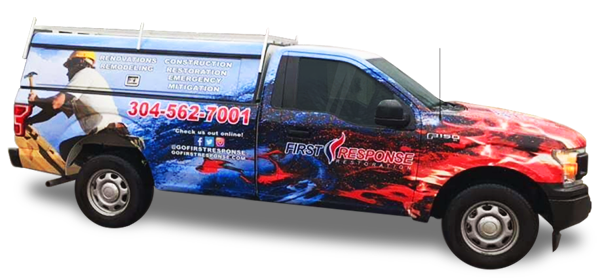Water damage can be a nightmare, causing extensive damage to your property and posing health risks. When faced with a water damage situation, time is of the essence. Acting swiftly to dry the water is crucial to prevent further damage and mitigate potential risks. But how exactly can you dry water quickly? What techniques and strategies can you employ to minimize the damage and ensure a successful water damage cleanup?
In this article, we will explore effective methods used by professionals to dry water quickly in your home or business. We will delve into the urgency of water damage and the importance of immediate action. We will also discuss strategies for air circulation and ventilation, the use of dehumidifiers, specialized equipment for water extraction, and drying techniques employed by water damage restoration experts. Additionally, we will uncover the “Absorb and Protect” approach to prevent mold growth and secondary damages.
Key Takeaways:
- Drying water quickly is essential to prevent further damage and health risks.
- Act swiftly in water damage situations to minimize the damage and mitigate potential risks.
- Promote air circulation and ventilation to expedite the drying process.
- Utilize dehumidifiers to efficiently remove excess moisture from the air.
- Specialized equipment, such as wet/dry vacuums and carpet extractors, aids in water extraction.
- Salvaging water-damaged items requires proper assessment and restoration techniques.
- Professional techniques, like industrial fans and advanced drying technologies, can accelerate the drying process.
- Implement the “Absorb and Protect” approach to prevent mold growth and secondary damages.
Understanding the Urgency of Water Damage
Water damage can have severe consequences if not addressed promptly. It is essential to understand the urgency of water damage and the importance of taking immediate action. Time is of the essence when dealing with water damage, as stagnant water can lead to structural damage, mold growth, and health hazards.
In a matter of hours, water can seep into walls, floors, and furniture, causing irreversible damage. The longer water is left unattended, the higher the risk of permanent structural damage and the growth of mold and mildew, which can pose health risks to occupants. Immediate action is crucial to prevent further deterioration of the property and ensure a safe living or working environment.
But what are the potential risks of delaying the drying process?
- Structural Damage: When water infiltrates building materials, such as drywall and wood, it weakens their structural integrity. Over time, this can lead to warping, buckling, and even collapse, putting occupants at risk.
- Mold Growth: Stagnant water and damp conditions create an ideal environment for mold and mildew to thrive. Mold can spread rapidly and release spores into the air, triggering respiratory issues and allergies.
- Health Hazards: Mold spores, bacteria, and other microorganisms that flourish in damp environments can pose serious health risks, especially to individuals with compromised immune systems or respiratory conditions.
- Damage to Belongings: Water can ruin personal belongings, including furniture, electronics, documents, and sentimental items. Prompt action is essential to salvage and minimize the loss of these possessions.
Understanding the potential risks that water damage poses reinforces the need for immediate action. Time is of the essence when it comes to water damage restoration. So, what can be done to initiate the drying process and mitigate the threat?
Strategies for Air Circulation and Ventilation
Proper air circulation and ventilation are crucial for effectively drying water-damaged areas. By implementing the right strategies, you can promote drying efficiency and expedite the drying process.
One of the simplest and most effective techniques to improve air circulation is to open windows and doors. This allows natural air flow and aids in moisture removal. By creating a cross breeze, you encourage air movement and promote drying.
In addition to natural ventilation, utilizing fans can significantly enhance the drying process. Fans help circulate the air, increasing evaporation and moisture removal. Placing fans strategically in the water-damaged area can ensure better air circulation and promote drying efficiency.
For larger or more challenging drying situations, consider using ventilation systems. These systems are designed to remove excessive moisture from the air and promote faster drying. Ventilation systems can be particularly useful in areas with limited natural airflow.
When using fans or ventilation systems, it is crucial to position them properly to maximize their effectiveness. Placing fans at different angles and heights can create a vortex effect, increasing air movement and drying efficiency.
Remember, proper air circulation and ventilation are key factors in promoting drying and preventing further damage. By incorporating these strategies into your water damage restoration process, you can help ensure a successful and efficient drying experience.
Employing Dehumidifiers for Optimal Moisture Absorption
Dehumidifiers are essential tools in the drying process for water-damaged areas. These units efficiently extract excess moisture from the air, helping to speed up the drying process and prevent further damage. Understanding how dehumidifiers work and their benefits can help you make informed decisions when selecting and using these drying equipment.
Dehumidifiers function by pulling in humid air from the environment and passing it through cooling coils. As the air cools down, the moisture in it condenses into water droplets. The condensed water is then collected in a reservoir or drained out of the unit. The dried air is reheated and released back into the room, now with reduced humidity.
The main benefit of using a dehumidifier is its ability to remove excess moisture from the air, preventing further water damage and inhibiting mold growth. By reducing the humidity level in the environment, dehumidifiers contribute to a healthier and more comfortable living or working space.
When selecting a dehumidifier, it’s important to consider its capacity and energy efficiency. The capacity refers to the amount of moisture the unit can effectively remove from the air within a given time. Choosing a dehumidifier with the appropriate capacity ensures optimal moisture extraction for the specific water-damaged area.
Energy efficiency is also a crucial factor to consider, as dehumidifiers can consume a significant amount of electricity during operation. Look for dehumidifiers with ENERGY STAR certification, as these units have been tested and proven to meet strict energy efficiency standards. By selecting an energy-efficient dehumidifier, you can save on electricity costs without compromising on its performance.
By properly employing dehumidifiers in the drying process, you can enhance moisture control, expedite the drying of water-damaged spaces, and prevent the growth of mold and other secondary damages.
Specialized Equipment for Water Extraction
Water extraction is a vital step in the water damage cleanup process. To effectively remove excess water from your property, specialized equipment is essential. Wet/dry vacuums and carpet extractors are two commonly used tools for water extraction.
Wet/dry vacuums are versatile machines that can handle both wet and dry materials. They have powerful suction capabilities, allowing them to efficiently extract water from various surfaces, including carpets, upholstery, and hard floors. These vacuums are equipped with specialized attachments and extensions to reach into tight spaces and easily remove water.
Carpet extractors are specifically designed to extract water from carpets and rugs. They use a combination of hot water, cleaning solution, and suction to thoroughly remove moisture. Carpet extractors are commonly used in larger water damage restoration projects or in commercial settings.
While wet/dry vacuums and carpet extractors are effective tools for DIY water extraction, it is often beneficial to enlist the services of professional restoration companies. These experts have the knowledge and experience to assess the extent of the water damage and determine the most appropriate equipment and techniques for efficient extraction.
Professional restoration services employ water removal experts who are trained in using specialized equipment. They have access to advanced water extraction equipment that goes beyond the capabilities of standard tools. These professionals can quickly and efficiently remove water from your property, minimizing the risk of further damage and reducing the drying time.
By utilizing specialized equipment for water extraction and considering professional restoration services, you can ensure thorough and efficient extraction of water from your property, aiding the overall water damage cleanup process.
Salvaging Water-Damaged Items and Belongings
When faced with water damage, not only is the structure of your home or business at risk, but your personal belongings and valuable items can also be severely affected. To minimize the loss and restore your cherished possessions, it is essential to understand effective restoration techniques and prioritize salvageable items.
First, begin by assessing the damage to determine which items can be salvaged. Start with a thorough inspection of each water-damaged item, considering factors such as the extent of water exposure, the type of material, and the sentimental or monetary value attached to it. Prioritize items that retain their structural integrity and hold significant importance to you or your family.
Next, focus on cleaning the water-damaged items to remove any dirt, debris, or contaminants. It’s important to use appropriate cleaning methods based on the material of each item. For example, delicate fabrics may require gentler cleaning techniques compared to hard surfaces. Consult with restoration experts or research reputable cleaning methods specific to each item to ensure optimal results.
After the cleaning process, it’s crucial to initiate the drying process promptly. Thoroughly drying water-damaged items will help prevent mold growth, reduce further damage, and increase the chances of successful restoration. Consider using fans, dehumidifiers, or other drying equipment to expedite the drying process and maintain proper air circulation.
Remember, prioritizing the restoration of water-damaged items involves careful consideration of their sentimental, historical, and monetary value. Seek professional assistance if needed, as restoration experts can provide valuable guidance and utilize specialized techniques to salvage your belongings effectively.
By implementing these restoration priorities, employing appropriate cleaning methods, and ensuring a thorough drying process, you can increase the chances of successfully salvaging your water-damaged belongings and reduce the impact of water damage on your cherished items.
How Do You Dry Water Quickly? Professional Techniques Revealed
In the field of water damage restoration, professionals utilize advanced techniques to dry water quickly and efficiently. By implementing these methods, they can minimize damage and restore properties to their pre-damaged state in a timely manner.
One of the primary tools used by water damage restoration experts is industrial fans. These powerful fans create high-velocity air movement, promoting air circulation and accelerating the evaporation process. By strategically placing industrial fans in water-damaged areas, professionals can expedite the drying process and prevent further damage.
In addition to industrial fans, professionals also utilize advanced drying technologies such as infrared drying and desiccant systems. Infrared drying utilizes infrared rays to heat the affected surfaces, resulting in rapid evaporation of moisture. This targeted approach allows for precise drying and prevents further damage to surrounding materials.
Desiccant systems, on the other hand, are specifically designed to remove moisture from the air. These systems use desiccant materials such as silica gel or activated alumina to absorb excess moisture, creating a dry environment that promotes quick drying. By employing desiccant systems, water damage restoration experts can effectively eliminate moisture and expedite the restoration process.
By incorporating these professional drying techniques, water damage restoration experts can achieve quick and efficient results. The combination of industrial fans, infrared drying, and desiccant systems allows for thorough drying, preventing the growth of mold and minimizing the risk of further damage. If you’re facing water damage, it’s recommended to seek the expertise of professionals who can employ these advanced techniques to ensure a successful restoration.
“Absorb and Protect” Approach to Prevent Mold and Secondary Damages
Preventing mold growth and secondary damages is crucial during the water damage cleanup process. One of the key strategies to adopt is the “Absorb and Protect” approach, which focuses on effectively controlling moisture and implementing measures to prevent mold growth. Let’s explore this approach in detail.
To begin with, moisture control is essential in preventing mold growth. Excess moisture in water-damaged areas creates an ideal environment for mold to thrive. To combat this, it is important to prioritize moisture absorption. Desiccants and absorbent materials play a vital role in absorbing excess moisture from the air and surfaces.
Desiccants are substances that help absorb moisture from the air. These can be silica gel packs, activated charcoal, or even certain types of clay. By strategically placing desiccants in water-damaged areas, they can efficiently absorb excess moisture and help reduce the risk of mold growth.
In addition to desiccants, using absorbent materials such as towels, cloths, or even specialized moisture-absorbing mats can aid in the process of moisture control. These materials help to absorb and remove excess moisture from surfaces, preventing it from seeping deeper into the structure and promoting the drying process.
Another critical aspect of the “Absorb and Protect” approach is implementing measures to prevent mold growth. Mold spores are present in the environment, and given the right conditions, they can lead to rapid mold growth on wet surfaces. To protect your property, it is important to take proactive steps in mold prevention.
One effective method is the use of antimicrobial treatments. These treatments are designed to inhibit and prevent the growth of mold and other microorganisms. Applying antimicrobial products to water-damaged areas can help eliminate existing mold spores and create an inhospitable environment for future mold growth.
Humidity control is another critical aspect to consider when preventing mold growth. High humidity levels can contribute to the development and spread of mold. By implementing proper humidity control measures, such as using dehumidifiers or air conditioning, you can maintain optimal humidity levels and reduce the risk of mold growth.
By adopting the “Absorb and Protect” approach and effectively controlling moisture using desiccants, absorbent materials, and implementing protective measures against mold growth, you can minimize the risk of mold and further damages during the water damage cleanup process.
Conclusion
Efficiently drying water after a water damage incident is crucial to prevent further damage and ensure the safety of your property. In this article, we have explored a range of effective techniques and strategies to quickly dry water in your home or business.
By understanding the urgency of water damage and taking immediate action, you can minimize potential risks and initiate the drying process promptly. Strategies for air circulation and ventilation, such as opening windows and utilizing fans, help promote drying efficiency by removing excess moisture from the affected areas.
Additionally, employing dehumidifiers and specialized equipment, such as wet/dry vacuums and carpet extractors, enhances moisture removal and speeds up the drying process. Salvaging water-damaged items by assessing their damage levels and implementing appropriate cleaning and drying methods can also contribute to successful water damage restoration.
For professional drying techniques, water damage restoration experts utilize industrial fans, infrared drying, and desiccant systems to achieve quick and efficient results. By implementing these techniques, you can significantly expedite the water damage restoration process.
By following these techniques and taking necessary steps to prevent mold growth and secondary damages, such as moisture control and utilizing absorbent materials, you can ensure a successful water damage cleanup process. Remember, quick water drying and prevention are key to minimizing the impact of water damage and protecting your property.
FAQ
How do you dry water quickly?
To dry water quickly, it is important to take immediate action. You can employ strategies such as promoting air circulation and ventilation, utilizing dehumidifiers, and using specialized equipment for water extraction. These techniques help remove excess moisture and expedite the drying process.
Why is it important to understand the urgency of water damage?
Understanding the urgency of water damage is crucial because it can lead to structural damage, mold growth, and health hazards. Taking immediate action to address water damage can prevent further issues and minimize the risk of extensive damage.
What are some strategies for air circulation and ventilation?
Strategies for air circulation and ventilation include opening windows and doors to allow natural air flow, using fans and ventilation systems to enhance drying efficiency, and removing excess moisture from the air.
How do dehumidifiers help in drying water-damaged areas?
Dehumidifiers efficiently remove excess moisture from the air, which aids in the drying process. They help control humidity levels, promote moisture absorption, and expedite the drying of water-damaged spaces.
What specialized equipment is used for water extraction?
Specialized equipment for water extraction includes wet/dry vacuums and carpet extractors. These tools are designed to efficiently remove excess water from your property. Seeking professional water extraction services is also recommended, as trained experts have the knowledge and equipment to effectively extract water.
How can water-damaged items and belongings be salvaged?
To salvage water-damaged items and belongings, it is important to assess the damage and prioritize items for restoration. Cleaning and drying techniques can then be employed to effectively restore water-damaged belongings.
What are some professional techniques for drying water quickly?
Professional drying techniques include the use of industrial fans for rapid drying, advanced drying technologies such as infrared drying and desiccant systems. These techniques are implemented by water damage restoration experts to achieve fast and efficient water damage restoration.
How can mold growth and secondary damages be prevented during the water damage cleanup process?
The “Absorb and Protect” approach can be employed to prevent mold growth and secondary damages. This approach focuses on absorbing excess moisture using desiccants and absorbent materials and implementing protective measures against mold growth. By effectively controlling moisture and protecting your property, you can minimize the risk of mold and further damages.

















